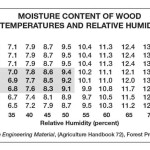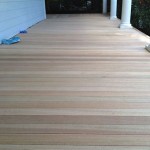Patio Wood Flooring: Enhancing Outdoor Spaces with Elegance and Durability
The integration of wood flooring into outdoor patio spaces has become a popular trend in recent years. This design choice brings an element of natural beauty and warmth to outdoor settings, transforming them into inviting extensions of the home. However, selecting the appropriate wood species and installation methods for patio flooring requires careful consideration, as these factors significantly impact the longevity and performance of the flooring under varying weather conditions.
Understanding the Benefits of Wood Patio Flooring
Wood flooring offers a multitude of advantages for outdoor patios. The inherent aesthetic appeal of wood contributes to a sophisticated and comfortable ambiance. Moreover, wood surfaces tend to be cooler underfoot compared to materials such as concrete or stone, particularly during hot summer months. Walking barefoot on a wooden patio is generally more comfortable and less likely to cause discomfort from heat absorption. This creates a more enjoyable and inviting outdoor experience.
From a design standpoint, wood flooring allows for a higher degree of customization. Different wood species offer a wide range of colors, grains, and textures, enabling homeowners to achieve a specific aesthetic vision. The natural variations in wood grain create a unique and organic look that is often difficult to replicate with synthetic materials. This inherent beauty enhances the overall design of the patio and connects the outdoor space more closely to the natural environment.
Properly installed and maintained wood flooring can also increase the value of a property. A well-designed and executed patio adds to the perceived quality and desirability of a home, making it a more attractive option for potential buyers. Furthermore, a comfortable and aesthetically pleasing outdoor space encourages residents to spend more time outdoors, leading to an improved quality of life and a greater appreciation for their home.
Finally, many wood species used for outdoor flooring are sustainably sourced. Choosing wood from responsibly managed forests supports environmentally friendly practices and reduces the overall carbon footprint of the project. This contributes to a more sustainable and ecologically conscious approach to home improvement.
Selecting the Right Wood Species for Outdoor Use
The choice of wood species is paramount when planning for outdoor patio flooring. Not all wood is suitable for exterior applications, as some varieties are more susceptible to moisture, decay, and insect infestation. Hardwoods, in general, are preferred due to their increased density and resistance to weathering; however, specific species offer superior performance in outdoor environments.
Ipe, also known as Brazilian Walnut, is widely regarded as one of the best choices for outdoor wood flooring. It boasts exceptional durability, hardness, and resistance to decay and insects. Ipe is naturally dense and oily, which helps it repel water and maintain its structural integrity over time. Its rich brown color adds a touch of elegance to any patio design. While Ipe can be more expensive than other wood species, its longevity often justifies the investment.
Teak is another popular option for outdoor flooring due to its natural oils and resins that provide excellent weather resistance. Teak is known for its durability and ability to withstand the elements with minimal maintenance. It also has a beautiful golden-brown color that weathers gracefully over time, developing a silvery-gray patina. Teak is a premium choice and is often used in high-end outdoor applications.
Redwood is a softer wood compared to Ipe and Teak, but it offers good resistance to decay and insects due to its natural tannins. Redwood is more affordable than the aforementioned hardwoods and provides a warm, reddish hue that can complement various architectural styles. However, redwood requires more frequent maintenance, such as sealing and staining, to protect it from moisture and UV damage.
Cedar is another relatively affordable option, known for its aromatic scent and resistance to decay. Cedar is less dense than redwood and requires more frequent maintenance to prevent warping and cracking. It is often used for decking and fencing due to its affordability and aesthetic appeal but may not be as durable as other options for high-traffic patio areas.
Pressure-treated lumber is a common alternative for outdoor applications, particularly for the underlying support structure of a patio. This type of lumber has been chemically treated to resist decay and insect infestation, making it a durable and cost-effective option for framing and joists. However, pressure-treated lumber is typically not used for the surface of the patio due to its less appealing appearance and potential for chemical leaching.
Installation Techniques and Maintenance for Longevity
Proper installation is crucial for the longevity and performance of wood patio flooring. The underlying structure should be designed to provide adequate drainage and ventilation to prevent moisture buildup and rot. A slightly sloped surface will help water runoff and prevent standing water. It is also essential to ensure that the wood flooring is properly spaced to allow for expansion and contraction due to temperature and humidity changes.
The most common installation methods include screwing or fastening the wood planks to a supporting frame. Stainless steel screws are recommended to prevent corrosion. Hidden fastener systems can create a cleaner, more seamless appearance by concealing the screw heads. Proper spacing between the planks is essential to allow for air circulation and prevent moisture from being trapped underneath the flooring.
Regular maintenance is necessary to keep wood patio flooring in good condition. This includes sweeping or washing the surface regularly to remove dirt, debris, and mold. Applying a sealant or stain periodically will help protect the wood from moisture, UV damage, and fading. The frequency of sealing or staining depends on the type of wood and the climate, but generally, it should be done every one to three years.
Inspecting the flooring regularly for signs of damage, such as cracks, splinters, or rot, is essential. Addressing these issues promptly can prevent further deterioration and extend the life of the flooring. Small cracks can be filled with wood filler, while more significant damage may require replacing individual planks. It is also important to check the supporting structure for any signs of decay or insect infestation.
Cleaning wood patio flooring should be done with a mild detergent and water. Avoid using harsh chemicals or abrasive cleaners, as they can damage the wood surface. A pressure washer can be used for cleaning, but it should be used with caution, as high pressure can damage the wood fibers. It is important to test the pressure washer on a small, inconspicuous area first to ensure that it does not cause any damage.
For areas with heavy foot traffic, consider using outdoor rugs or mats to protect the wood flooring from wear and tear. These protective measures can help prolong the life of the flooring and reduce the need for frequent maintenance. Choose rugs and mats that are designed for outdoor use and are resistant to moisture and mildew.
In climates with harsh winters, it is advisable to protect wood patio flooring from snow and ice. Using a snow shovel or ice melt can prevent damage from freeze-thaw cycles. Avoid using metal shovels, as they can scratch the wood surface. Consider covering the flooring with a tarp or other protective material during the winter months to minimize exposure to the elements.
By carefully selecting the appropriate wood species, implementing proper installation techniques, and adhering to a regular maintenance schedule, homeowners can enjoy the beauty and durability of wood patio flooring for many years to come. This investment can transform an ordinary outdoor space into a welcoming and aesthetically pleasing extension of the home.

Best Woods For Outdoor Living Spaces Signature Hardwood Floors

Interlocking Patio Deck Tiles Hsunns Set Of 10 Outdoor Wood Floor For Garden 12 X Garage Flooring And Indoor Brown A6898 Com

Btmway 1 Ft X Square Interlocking Acacia Wood Quick Patio Deck Tile Outdoor Checker Pattern Flooring 10 Per Box Cxxbn Gi33346w685 Tile01 The Home Depot

Deck Tiles Ipe Decking

Btmway 1 Ft X Square Interlocking Acacia Wood Quick Patio Deck Tile Outdoor Striped Pattern Flooring 20 Per Box Cxx20sp Gi82672w685 Tile01 The Home Depot

15 Beautiful And Affordable Outdoor Flooring Options Floorings

Outdoor Patio Flooring Ideas

Best Wood For Outdoor Decks

Top 5 Wood Floors For A Long Lasting Outdoor Deck Yvyra Los Mejores Suelos De Interior Y Exterior

Outdoor Brown Solid Wood Decking For Flooring Size Dimension 33 X 3 At Rs 275 Sq Ft In Moradabad
Related Posts








